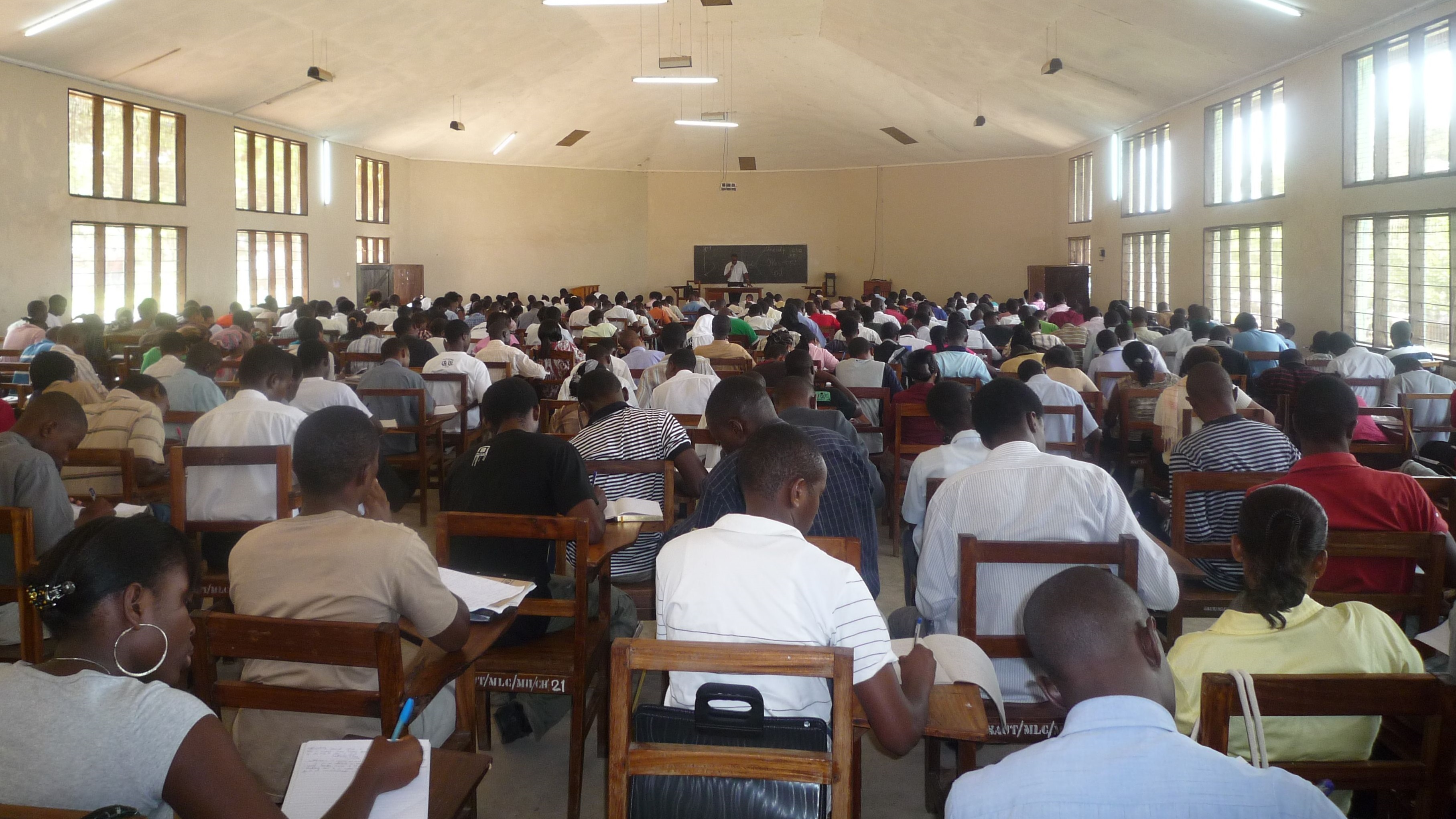Feb 14, 2017 | Demography
By Samir KC, IIASA World Population Program
In 2011, the last decadal census of Nepal counted more than 26.5 million people, plus about 2 million “absentee” Nepalese working abroad. The census revealed a population that is on the move, a rapidly declining number of births, and a high degree of population heterogeneity between the different areas of Nepal. The increasing complexity in the demographic dynamics is making it difficult for Nepal’s government to plan future policies and allocate budgets. That’s why at IIASA in collaboration with Ministry of Health of Nepal, we recently projected the Nepalese population up to 2031 by age and sex for 75 districts as well as more than 4000 villages and municipalities.

Passengers on a bus in Nepal. The country is seeing large amounts of migration both within and outside of the country. ©AusAID
Our projections show that the population of Nepal will continue to increase, albeit at a slow rate from, 26.5 million today to 34.2 million in 2031, and the age structure will continue to grow older. We found that demographic behaviors differ largely by geographic area within Nepal, and highly correlates with the inequalities in terms of development and opportunities. For example, the fertility level in the Mid-Western Hills and Mountain region were very high compared to the rest of the country.
Since 1959, Nepal has had an aggressive but non-mandatory family planning policy with a message to limit family size to two children, but this policy will be soon ending as the overall fertility is approaching the benchmark in most parts of the country. Our study projects that the number of children born, which has been declining in the past 10-15 years, will stabilize with some fluctuation due to larger cohort of women entering the reproductive ages. In the past, the declining number of births lowered the burden in universalizing health coverage. The study suggests that now the government should channel its resources where needed and the nationwide focus should be more on improving the quality of reproductive services rather than telling people how many children they should have.
A stream of migration
Our analysis shows that for Nepal, the future population dynamics are likely to be influenced in large part by migration, both within and outside of the country. We found that especially in the hill and mountain districts of Nepal, depopulation is occurring as people move away. Because of the Maoist conflict during 1996-2006 and its impact on all aspects of life, young Nepali males began leaving their homes to find safer areas and better employment opportunities, often in Arab and Southeast Asian countries. This in turn might have affected the fertility rates as well as increased internal migration of the dependents (of the migrants made possible by the flow of remittance) from less developed to more developed areas within Nepal.
In recent times, women have joined the migration stream, and are likely to be a major force in lowering the fertility rate in Nepal. If the trend continues, a large part of the mountains and hills is likely to depopulate and the political and socioeconomic consequences of such phenomenon should be studied.

Projected population change in Nepal in 2031 compared to 2011. ©Samir KC & Markus Speringer
Our projections show that the country should expect a huge number of this absentee population to return. The young men and women in their 20s and 30s who have left the country to work in Arab and Asian countries will have to return in their 40s and 50s due to strict rules regulating labor migration in these countries, the labor intensive jobs might not suit their age, and to finally reunite with the family back home. They could be forced to return even sooner if the economic situation in these countries is adversely affected by regional or global recession or conflict, price of oil etc. However, questions remain about how the return process will unfold, where people they return to, and what its impact on the society and the nation would be.
We think that the data and the population model, and the projection that we developed for Nepal could be very useful in many ways, for example in population, environment, economics, social transformation, sustainable development, and other areas. However, we need more data and projections and the possibility to run alternative scenarios, and to do this, demographers, population experts, and governmental institutions should collaborate. One such collaborative initiative is currently underway at the Shanghai University, where I have recently started to develop such a model in 11 countries in Asia, including Nepal. Once the base population model is ready, adding further layers representing the wellbeing of the population will be the next step.
Reference
KC S, Speringer M, Thapa A, & Khanal MN (2016). Projecting Nepal’s Demographic Future- How to deal with spatial and demographic heterogeneity. IIASA Working Paper. IIASA, Laxenburg, Austria: WP-16-021 http://pure.iiasa.ac.at/14029/
This article gives the views of the author, and not the position of the Nexus blog, nor of the International Institute for Applied Systems Analysis.
Jan 27, 2017 | Demography
By Anne Goujon, IIASA World Population Program
Less than 6% of the working age population has a post-secondary education in sub-Saharan Africa, according to the Wittgenstein Centre Data Explorer. However, there is a huge diversity of experiences in the region: those countries located in Southern and Western Africa have higher shares of highly educated people compared to those in Eastern and Middle Africa.
The potential for increasing education levels is tremendous as there is a huge demand for higher education, partly driven by rapid population growth. The population in the age of attending higher education—18–23 years—is forecasted to increase by 50% from its 2015 level (110 million) by 2035 (183 million), and will have doubled by 2050 to 235 million. The number of colleges and universities in the region has been burgeoning to fulfill the demand. Those are not always of very good quality, whether they are in the public sector or the private, as most are. While regulatory bodies exist to check whether all education providers meet national and international standards, they are not universal.

A 2015 graduation ceremony for the Open University of Sudan. ©Hamid Abdulsalam, UNAMID via Flickr
The expansion of higher education has led to substantial brain drain to Europe, North America, and Australia, because highly educated find better opportunities there for studying and jobs–and better salaries. Researchers have estimated that in some countries such as Eritrea, Ghana, Kenya, Sierra Leone, Somalia, and Uganda, more than a third of the national high-skilled labor force had migrated to OECD countries in 2000. While remittances that these people send home help compensate and reinforce the education in their countries of origin, they do not compensate for the departed skills and knowledge.
These facts about education in sub-Saharan Africa are well-known to education professionals and researchers in the field. But as we show in a new book Higher Education in Africa: Challenges for Development, Mobility and Cooperation, published in January 2017, there are a lot of other aspects of education in the region that are not so well-known and that could provide interesting avenues for further research.
For instance, you probably did not know that the African Union has a higher education harmonization strategy. The general idea is the same as the Bologna process in Europe: enhance the mobility of students by making higher education systems more compatible and by strengthening the quality assurance mechanisms. One chapter by Emnet Tadesse Woldegiorgis, which looks at the process of harmonization of higher education in Sub-Saharan Africa, shows that it follows in the footsteps of the Bologna process mostly because of the involvement of international donors and of the strong links between African universities and European ones.

Students in lecture room at St. Augustine University of Tanzania © Max Haller and Bernadette Mueller Kmet 2009
Many chapters of the book look at the mobility of more highly educated people between Europe and sub-Saharan Africa. This is the case of a chapter by Julia Boger who interviewed graduates from Germany returning to their countries of origin: Ghana and Cameroon. The experiences of those graduates from the two West African countries are radically different: because mainly of their networks, the Ghanaian graduates face less difficulties in finding a job upon return to their country than the Cameroonians.
The last part of the book looks at some cooperation programs that are in place between the North and South (also between the South and the South). Lorenz Probst and colleagues, in their chapter, report about the challenges in implementing a transdisciplinary course in Africa within the context of the rather compartmentalized sectors of higher education in Africa.
The development of higher education could push forward change and innovation, just as much as capacity building in sub-Saharan Africa where it is direly needed.
 Reference
Reference
Goujon, Anne, Max Haller, and Bernadette Müller Kmet. 2017. Higher Education in Africa: Challenges for Development, Mobility and Cooperation. Newcastle upon Tyne, UK: Cambridge Scholars Publishing.
Note: This article gives the views of the author, and not the position of the Nexus blog, nor of the International Institute for Applied Systems Analysis.
Nov 25, 2016 | Climate Change, Demography
Samir KC is a researcher in the IIASA World Population Program. He worked on the population projections that form the “human core” of the Shared Socioeconomic Pathways (SSPs), a set of scenarios designed for climate change research, but increasingly being applied more broadly to research in sustainability and environmental change.
What are the SSPs?
The Shared Socioeconomic Pathways are about the future, how the future could look like under different set of conditions. When we want to talk about the future or we need to think about the future, we always have to do some kind of a projection. Whatever the topic is, even in our personal life, we can use scenarios to map out how things might develop, creating different pathways, which can allow us to better understand how our choices could affect these pathways.
Socioeconomic means the major factors socially as well as economically that can affect future changes on our planet—demographic, socially, and economic. But within this broad umbrella, there are multiple disciplines who work on their own topics and have their own methods and data. If they want to work together they have to match with each other so that output of one work could be the input to another group. That’s why the word shared is there.
The SSPs were developed for the Intergovernmental Panel on Climate Change (IPCC). Why were they needed?
For one thing, we just needed to update the data from the earlier generation of emissions scenarios, and define new scenarios. But secondly, the focus changed a bit between the IPCC’s last report and the most recent one, released in 2014. In the new scenarios, the focus is more on challenges to adaptation and mitigation of climate change. These dimensions are harder to incorporate because they depend on a lot of socioeconomic factors.

Researchers use scenarios to map out a range of possible future developments in the socioeocomic factors that influence climate change. © Salvatore Vastano via Flickr
You worked specifically on the population projections for the SSPs, which were published in 2014. How did this process work?
The first thing that we did was to define narratives for each of the SSPs, essentially a story about how the world would look like in the future. This first part is very important. These narratives were based on the current knowledge of science and how the variables are related and interact.
Then for each of the pathways, we had to start defining the variables like population, urbanization, technological change, and economy. Since population is one of the first variables you need in order to calculate other socioeconomic variables, it was the first thing we looked at when turning the narratives into a quantitative projection. Population is needed as a multiplier to calculate demand in the future, for example to calculate how much energy will be required in the future, how much water, and many other things. At the same time when there are adverse effects of climate change, the population determines how many people are impacted as well as who and where. For example the air pollution group who would need population to see how will air pollution affect the population. So population is an important variable.
It was an iterative process—there were lots of calls, involving sometimes 10 or 15 people from many different fields. Whenever we had something to share or something to decide, it was done in this big group. It was a lot of talking and listening to others. That was a very educational for me, because I learned a lot about how people are using population data. It was a very good dialogue—people had sometimes very simple questions but sometimes very interesting questions about population, fertility, mortality, and those kinds of things.
How did your population projections differ from previous demographic data used for climate research?
In most climate research, until recently, population was used as a total number. Populations were assumed to be homogenous—everybody the same, the average will represent everyone. We argued that that is not the case, that you need to consider population heterogeneity, not only age and sex, but also education levels. There is a growing body of research showing that these details make a difference.
Still not everybody is using it, but for example, people working on GDP have used it, and hopefully more and more will use these factors in the future. We have shown in the past that knowing the education level of the population can help us make better projections. Having a more educated population has effects on many other socioeconomic measures. For example, more educated societies have higher level of productivity. Education level has also been used to calculate the speed of technological change. In societies where there are highly educated people the advancement in technological change comes faster than otherwise. And these factors are key to understanding humanity’s vulnerability to climate change, our ability to adapt, and our chances to solve the problem.

Schoolchildren in Indonesia: Population variables like education have big impacts on greenhouse gas emissions and vulnerability to climate change. © Asian Development Bank
A lot of your work focuses on what might happen in the future. How do you explain to people the difference between scenarios or projections and predictions? When we make projections about the future, we don’t use the word “prediction.” The chances that such a projection will be wrong are 100%. We can never say exactly what will happen in the future.
It’s important to understand how the narratives were defined, how we defined the scenarios. We cannot guarantee the future, the results, but we can guarantee the quality of what can be done, what we can say now, today about the future. And then there is the idea of uncertainty – we have said something about the future but we haven’t reported any kind of uncertainty there other than reporting ranges of scenarios. This is a big area for future work. It’s difficult to do, and it would be difficult to interpret, but it’s important to consider.
More information
References
KC S, Lutz W (2014). The human core of the shared socioeconomic pathways: Population scenarios by age, sex and level of education for all countries to 2100. Global Environmental Change http://pure.iiasa.ac.at/10759/
Riahi K, van Vuuren DP, Kriegler E, et al. (2016). The Shared Socioeconomic Pathways and their energy, land use, and greenhouse gas emissions implications: An overview. Global Environmental Change. http://pure.iiasa.ac.at/13280/
This article gives the views of the interviewee, and not the position of the Nexus blog, nor of the International Institute for Applied Systems Analysis.
Oct 13, 2016 | Demography
By Anne Goujon, IIASA World Population Program
According to the Displaced Persons in Austria Survey (DIPAS) conducted by a team at the Vienna Institute of Demography and at IIASA, the large number of asylum seekers who came to Austria in the fall of 2015 appeared to possess levels of education that are higher than the average level in their country of origins. Moreover, the share of displaced persons from Syria and Iraq with a higher education is close to that of the Austrian population – around 30%.

Students at school in Beirut, Lebanon. Two-thirds of the students at the school are Lebanese and one-third of the students are Syrian. Photo © Dominic Chavez | World Bank
This seemed surprising to many, judging from the number of critical and even aggressive comments that were posted online after the results of this study appeared in PLoS ONE in September and were covered by the press, mostly in Austria. Some of these comments even suggested that people were lying, and/or that the scientists were “do-gooders” covering up the truth.
However, there are several logical reasons for these findings, none of them having anything to do with deceit. The main reason why we know the study participants were not lying is that they had no incentive to lie. They were informed about the purpose of the survey and the fact that there was nothing at stake for them besides contributing to knowledge on the refugee population. Second, their levels of education matched very well with other information they gave, for instance their previous employment, so that if lying, they were uncannily consistent. Moreover, they were rarely alone when taking the questionnaire and it is difficult for a father or mother to lie for instance in front of their children. So we tend to believe the 514 displaced persons that answered the questionnaire. But these are not our only reasons:
Not everyone can afford the adventurous trip to Austria. We asked in the survey how much their journey to Austria–mostly through Turkey–cost, and 75% reported more than 2.000 US$ per person, and 30% more than $4.000. Such a sum is not easy to come by in countries where the average salary is low. The group of asylum seekers that fled to Austria was a selected group with a higher income, and consequently more likely to have had better access to education than those who could not afford to move further and were displaced within Syria or in the neighboring countries (Turkey, Lebanon, Jordan).
Furthermore, this is a young population. Most of them are below the age of 45 years, in fact, the mean age of the respondents was 31 years. Therefore they most likely benefited from the improvements in education that were prevalent in recent times before the war started.
What we cannot say is whether the level of education in their home countries is or was equivalent to the level of education in Austria. For example, we cannot say if an engineer in informatics from the Damascus University has the same knowledge and skills as an engineer trained at the Technical University in Vienna. However, studies implemented by the Public Employment Service in Austria show that refugees’ levels of competence and skills are largely in line with their levels of education and/or occupation. Furthermore, people who successfully pursued a higher education are more likely to be willing and interested to learn new things, such as learning a new language, developing additional skills, or retraining for other professions.
Therefore, the displaced persons that came to Austria at the end of 2015 have a high potential for contributing to the economy that should not be ignored.

Reference
Buber-Ennser, I., Kohlenberger, J., Rengs, B., Al Zalak, Z., Goujon, A., Striessnig, E., Potančoková, M., Gisser, R., Testa, M.R., Lutz, W. (2016) Human Capital, Values, and Attitudes of Persons Seeking Refuge in Austria in 2015. PLoS ONE 11(9): e0163481. doi:10.1371/journal.pone.0163481
This article gives the views of the author, and not the position of the Nexus blog, nor of the International Institute for Applied Systems Analysis.
Apr 27, 2016 | Demography
By Sergei Scherbov, IIASA World Population Program (This post was originally published on The Conversation)
The populations of most countries of the world are aging, prompting a deluge of news stories about slower economic growth, reduced labor force participation, looming pension crises, exploding health care costs and the reduced productivity and cognitive functioning of the elderly.
These stories are dire, in part because the most widely used measure of aging – the old-age dependency ratio, which measures the number of older dependents relative to working-age people – was developed a century ago and implies the consequences of aging will be much worse than they are likely to be. On top of that, this ratio is used in political and economic discussions of topics such as health care costs and the pension burden – things it was not designed to address.
Turning 65 in 2016 doesn’t mean the same thing as hitting 65 in 1916. So instead of relying on the old-age dependency ratio to figure out the impact of aging, we propose using a series of new measures that take changes in life expectancy, labor participation and health spending into account. When you take these new realities into account, the picture looks a lot brighter.

How facts from the census questionnaire were tabulated into statistics in 1950. © The U.S. National Archives/Flickr
Our tools to measure aging have aged
The most commonly used measure of population aging is the “old-age dependency ratio,” which is the ratio of the number of people 65 years or older to those 20 to 64.
But, since the old-age dependency ratio was introduced in the early 1900s, most countries have experienced a century of rising life expectancy, and further increases are anticipated.
For instance, in 1914, life expectancy at birth in Sweden was 58.2 years (average for both sexes). By 2014, it had risen to 82.2 years. In 1935, when the U.S Social Security Act was signed into law, 65-year-olds were expected to live 12.7 more years, on average. In 2013, 65 year-olds may expect to live 19.5 years more.
But these changes aren’t reflected in the conventional statistics on aging. Nor is the fact that many people don’t just stop working when they turn 65, and that people are staying healthier for longer.
To get a better sense of what population aging really means today, we decided to develop a new set of measures that take these new realities into account to replace the old-age dependency ratio. And instead of one ratio, we created several ratios to evaluate health care costs, labor force participation and pensions.
Who retires at 65 anymore?
One of these new realities is that the number of people working into their late 60’s and beyond is going up. In 1994, 26.8% of American men aged 65-69 participated in the labor force. That figure climbed to 36.1% in 2014 and is forecast to reach 40% by 2024. And the trend is similar for even older men, with 17% of those aged 75-79 expected to still be working in a decade, up from just 10% in 1994.
Clearly, these older people did not get the message that they were supposed to become old-age dependents when they turned 65.
This isn’t unique to the U.S. Rates like these in many countries have been rising. In the U.K., for instance, the labor force participation rate of 65- to 69-year-old men was 24.2% in 2014, and in Israel it was 50.2%, up from 14.8% and 27.4%, respectively, in 2000. In part this is because older people now often have better cognitive functioning than their counterparts who were born a decade earlier.
So, instead of assuming that people work only from ages 20 to 64 and become old-age dependents when they hit 65, we have computed “economic dependency ratios” that take into account observations and forecasts of labor force participation rates. This tells us how many adults not in the labor force there are for every adult in the labor force, giving us a more accurate picture than using 65 as a cutoff point. We used forecasts produced by the International Labor Organization to figure this out.
The old-age dependency ratio in the U.S. is forecast to increase by 61% from 2013 to 2030. But using our economic dependency ratio, the ratio of adults in the labor force to adults not in the labor force increases by just 3% over that period.
Clearly, doom and gloom stories about U.S. workers having to support so many more non-workers in the future may need to be reconsidered.
Is the health care burden going to be so high?
Another reality is that while health care costs will go up with an older population, they won’t rise as much as traditional forecasts estimate.
Instead of assuming that health care costs rise dramatically on people’s 65th birthdays, as the old-age dependency ratio implicitly does, we have produced an indicator that takes into account the fact that most of the health care costs of the elderly are incurred in their last few years of life. Increasing life expectancy means those final few years happen at ever later ages.
In Japan, for example, when the burden of the health care costs of people aged 65 and up on those 20-64 years old is assessed using only the conventional old-age dependency ratio, that burden is forecast to increase 32% from 2013 to 2030. When we compute health care costs based on whether people are in the last few years of their lives, the burden increases only 14%.
Pension ages are going up
The last reality we considered concerns pensions.
In most OECD countries, the age at which someone can begin collecting a full public pension is rising. In a number of countries, such as Sweden, Norway and Italy, pension payouts are now explicitly linked to life expectancy.
In Germany, the full pension age will rise from 65 to 67 in 2029. In the U.S., it used to be 65, is now 66 and will soon rise to 67.
Instead of assuming that everyone receives a full public pension at age 65, which is what the old-age dependency ratio implicitly does, we have computed a more realistic ratio, called the pension cost dependency ratio, that incorporates a general relationship between increases in life expectancy and the pension age. The pension cost dependency ratio shows how fast the burden of paying public pensions is likely to grow.
For instance, in Germany, the old-age dependency ratio is forecast to rise by 49% from 2013 to 2030, but 65-year-old Germans will not be eligible for a full pension in 2030. Our pension cost dependency ratio increases by 26% over the same period. Instead of indicating that younger Germans will have to pay 49% more to support pensioners in 2030 compared to what they paid in 2013, taking planned increases in the full pension age into account, we see that the increase is 26%.

Pranom Chartyothin, a 72-year-old bus conductor, sells and collects bus tickets in downtown Bangkok, Thailand. Photo Credit: Jorge Silva/Reuters, CC BY
Sixty-five just isn’t that old anymore
In addition to this suite of measures focused on particular aspects of population aging, it is also useful to have a general measure of population aging. We call our general measure of population aging the prospective old-age dependency ratio.
People do not suddenly become old-age dependents on their 65th birthdays. From a population perspective, it makes more sense to classify people as being old when they are getting near the end of their lives. Failing to adjust who is categorized as old based on the changing characteristics of people and their longevity can make aging seem faster than it will be.
In our prospective old-age dependency ratio, we define people as old when they are in age groups where the remaining life expectancy is 15 years or less. As life expectancy increases, this threshold of old age increases.
In the U.K., for instance, the conventional old-age dependency ratio is forecast to increase by 33% by 2030. But when we allow the old-age threshold to change with increasing life expectancy, the resulting ratio increases by just 13 percent.
Populations are aging in many countries, but the conventional old-age dependency ratio makes the impact seem worse than it will be. Fortunately, better measures that do not exaggerate the effects of aging are now just a click away.
Note: This article gives the views of the author, and not the position of the Nexus blog, nor of the International Institute for Applied Systems Analysis.












You must be logged in to post a comment.